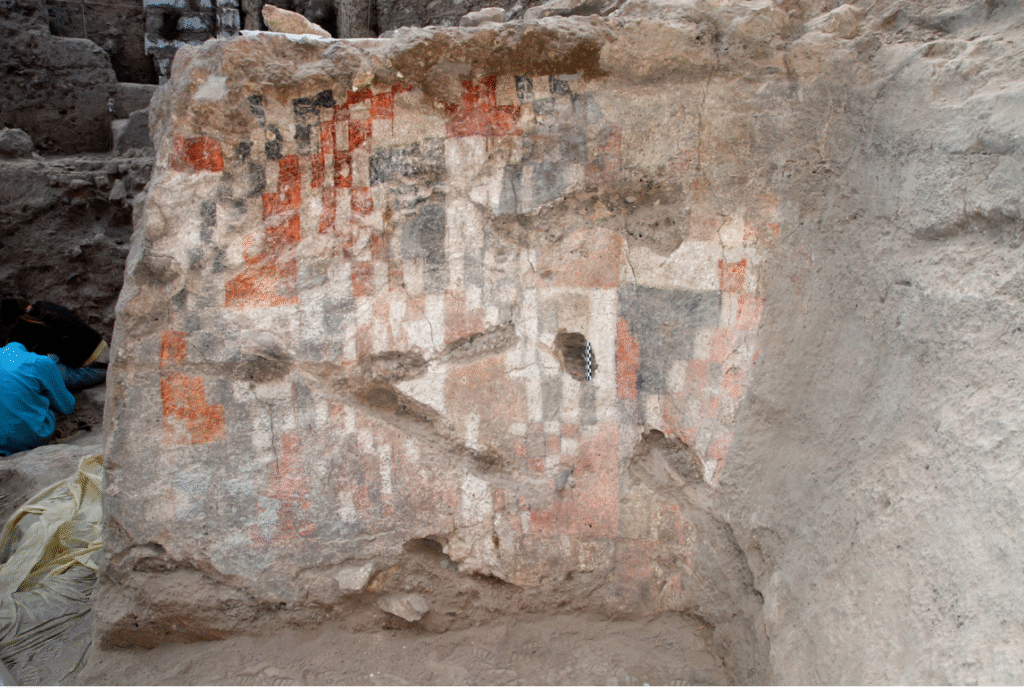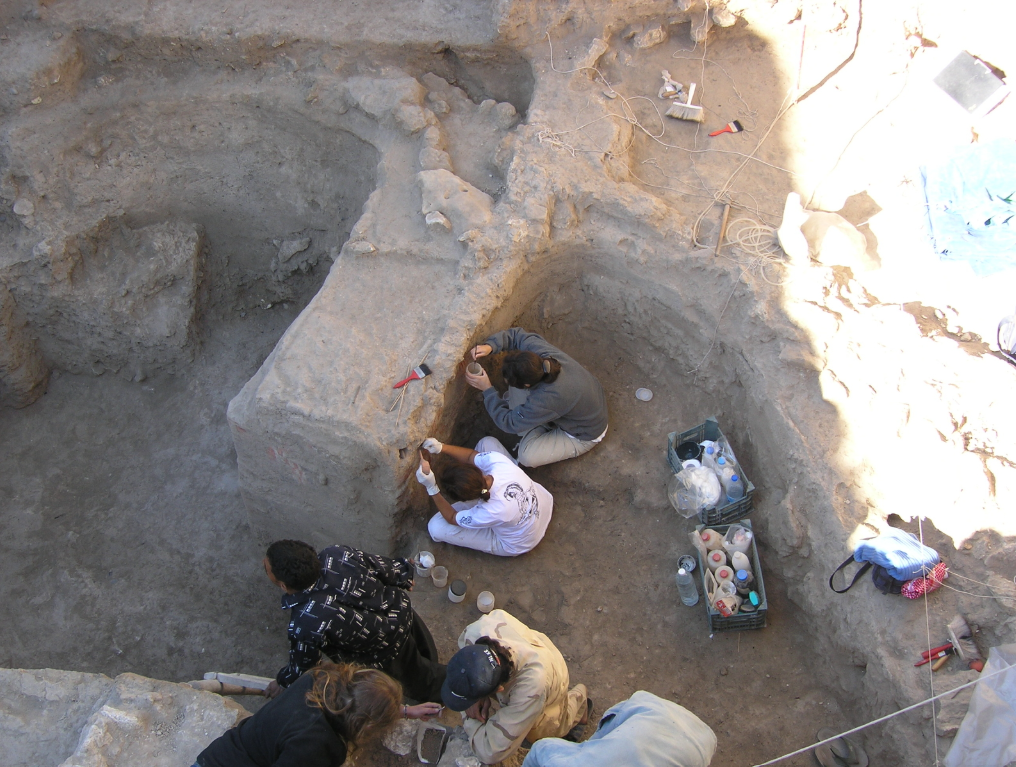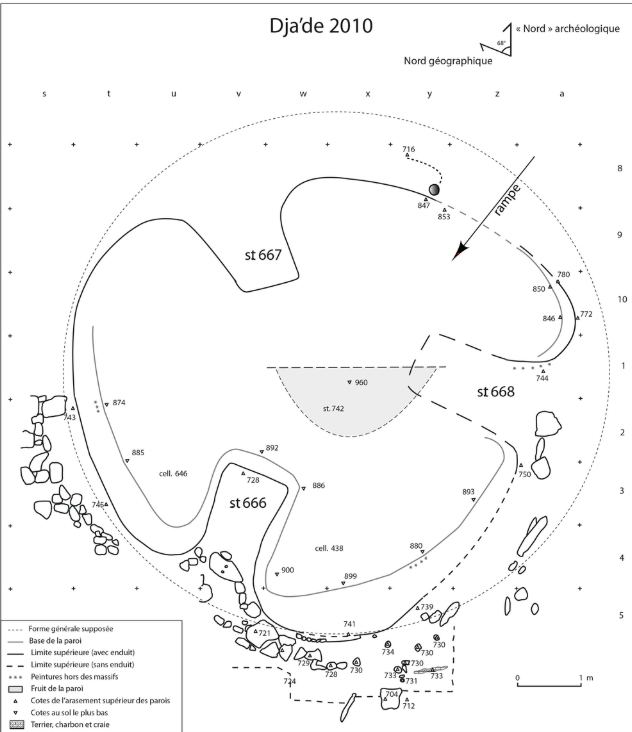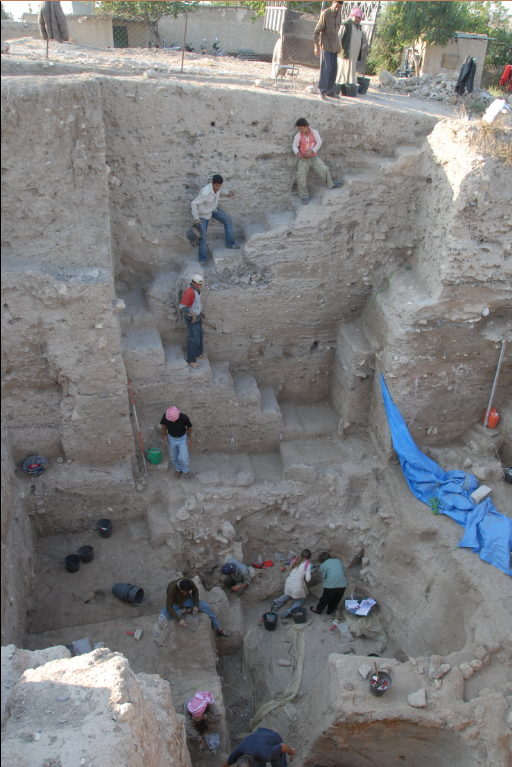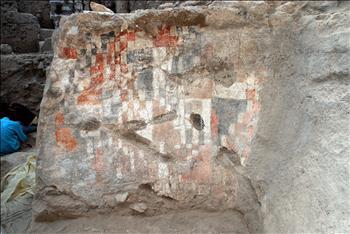The Jadat al-Maghara settlement can be divided into three phases. The first phase is characterised by a group of isolated, rectangular houses separated by large, uncovered spaces. The presence of perforated columns confirms that the buildings are of a light type and built with ephemeral materials. In addition, there is a large, partially underground, circular house with a diameter of 7.5 metres and a central pillar supporting wooden pieces and branches forming the roof. This is almost certainly a public building, or ‘clan house’, called the ‘House of Drawings’, where geometric decorative drawings consisting of geometric shapes painted in red and black on a white background were discovered on three walls. These are the oldest drawings of their kind in the world. This building was abandoned in later phases. Conversely, the structure of the houses expanded during the second phase and decreased during the third, as excavations revealed more about funerary practices. The deceased were generally buried under the floors of the houses. In the third phase, a special building housed the skeletal remains of over 70 people and was known as the ’House of the Dead’. The study of these remains revealed the earliest known evidence of tuberculosis.

